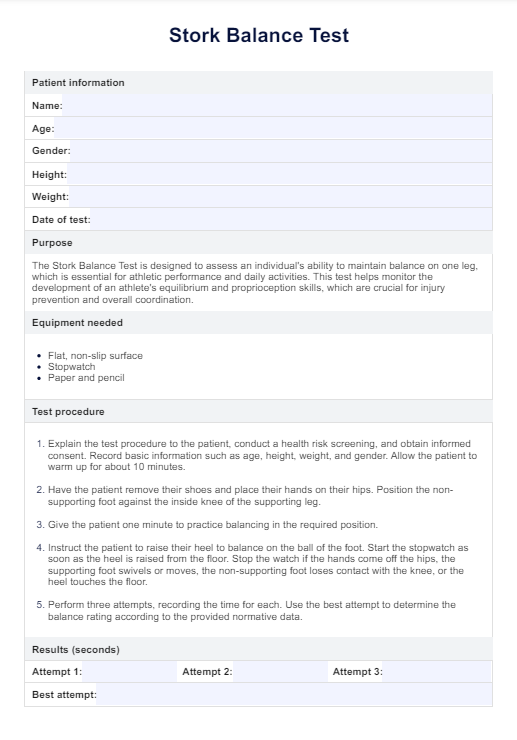The Stork Balance Test takes less than a minute per stork test attempt. Including preparation and multiple attempts, it typically takes around 10-15 minutes.

Stork Balance Test
Assess balance effectively with our Stork Balance Test template. Ideal for tracking athletic performance and preventing injuries. Download our free example now!
Use Template
Stork Balance Test Template
Commonly asked questions
Yes, the Stork Balance Test can be adapted for all age groups. It is commonly used for athletes but can also be valuable for assessing balance in older adults and children.
If a patient struggles to balance even for a few seconds, this may indicate significant balance issues. Further assessment and a tailored intervention plan should be developed to address these challenges.
EHR and practice management software
Get started for free
*No credit card required
Free
$0/usd
Unlimited clients
Telehealth
1GB of storage
Client portal text
Automated billing and online payments











